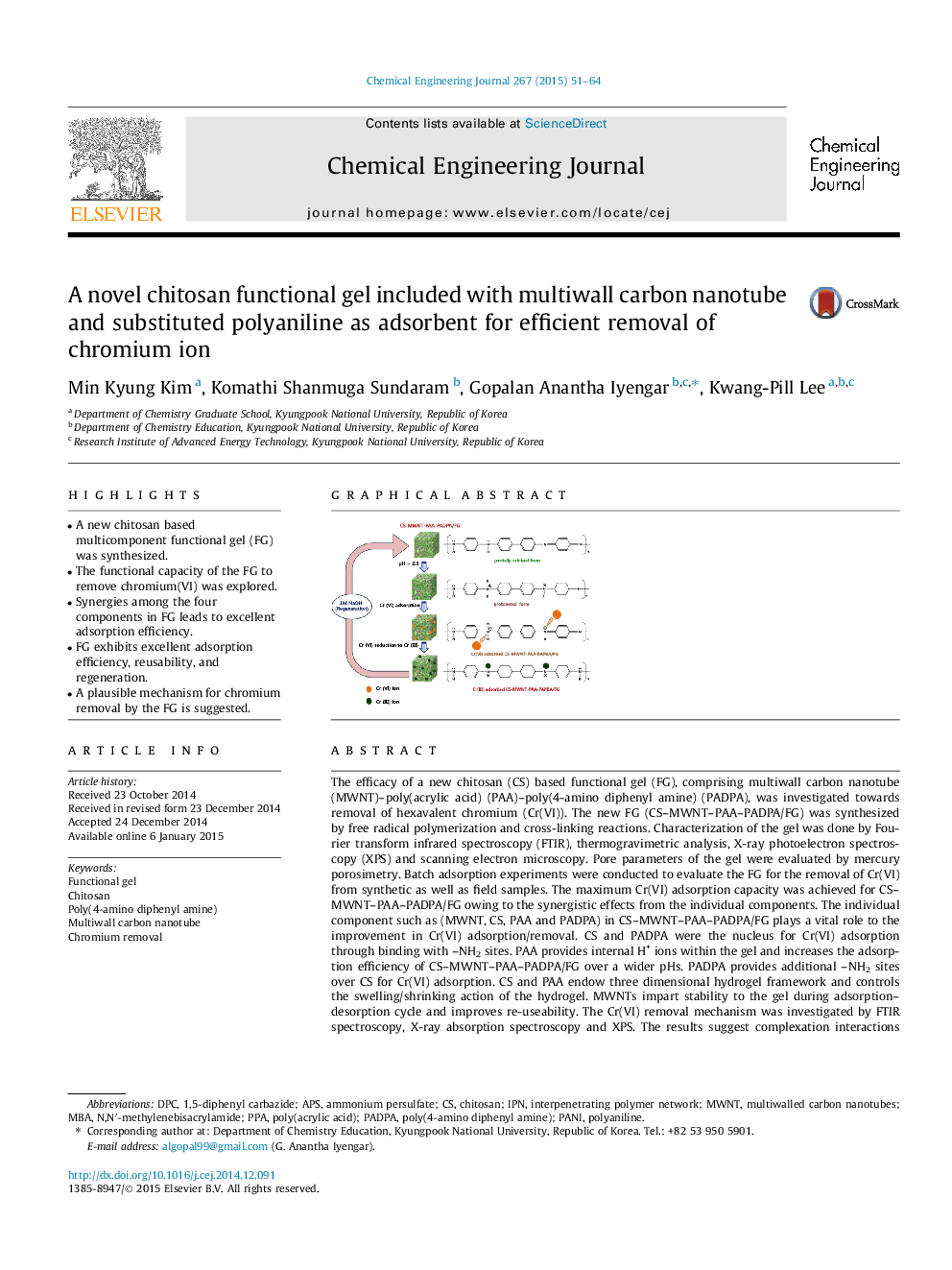| کد مقاله | کد نشریه | سال انتشار | مقاله انگلیسی | نسخه تمام متن |
|---|---|---|---|---|
| 146605 | 456374 | 2015 | 14 صفحه PDF | دانلود رایگان |
• A new chitosan based multicomponent functional gel (FG) was synthesized.
• The functional capacity of the FG to remove chromium(VI) was explored.
• Synergies among the four components in FG leads to excellent adsorption efficiency.
• FG exhibits excellent adsorption efficiency, reusability, and regeneration.
• A plausible mechanism for chromium removal by the FG is suggested.
The efficacy of a new chitosan (CS) based functional gel (FG), comprising multiwall carbon nanotube (MWNT)–poly(acrylic acid) (PAA)–poly(4-amino diphenyl amine) (PADPA), was investigated towards removal of hexavalent chromium (Cr(VI)). The new FG (CS–MWNT–PAA–PADPA/FG) was synthesized by free radical polymerization and cross-linking reactions. Characterization of the gel was done by Fourier transform infrared spectroscopy (FTIR), thermogravimetric analysis, X-ray photoelectron spectroscopy (XPS) and scanning electron microscopy. Pore parameters of the gel were evaluated by mercury porosimetry. Batch adsorption experiments were conducted to evaluate the FG for the removal of Cr(VI) from synthetic as well as field samples. The maximum Cr(VI) adsorption capacity was achieved for CS–MWNT–PAA–PADPA/FG owing to the synergistic effects from the individual components. The individual component such as (MWNT, CS, PAA and PADPA) in CS–MWNT–PAA–PADPA/FG plays a vital role to the improvement in Cr(VI) adsorption/removal. CS and PADPA were the nucleus for Cr(VI) adsorption through binding with –NH2 sites. PAA provides internal H+ ions within the gel and increases the adsorption efficiency of CS–MWNT–PAA–PADPA/FG over a wider pHs. PADPA provides additional –NH2 sites over CS for Cr(VI) adsorption. CS and PAA endow three dimensional hydrogel framework and controls the swelling/shrinking action of the hydrogel. MWNTs impart stability to the gel during adsorption–desorption cycle and improves re-useability. The Cr(VI) removal mechanism was investigated by FTIR spectroscopy, X-ray absorption spectroscopy and XPS. The results suggest complexation interactions between the multiple organic functional groups in FG and Cr(VI) and transformation of Cr(VI) to Cr(III). Furthermore, the new CS–MWNT–PAA–PADPA/FG is stable and recyclable, retaining about 85% of the removal efficiency up to three adsorption cycles.
Figure optionsDownload as PowerPoint slide
Journal: Chemical Engineering Journal - Volume 267, 1 May 2015, Pages 51–64
